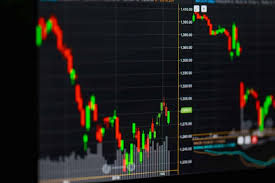
Forex Trading for Dummies: A Comprehensive Guide
If you are new to the world of finance and trading, the concept of Forex trading can seem overwhelming. However, with the right guidance and knowledge, anyone can learn to navigate the Forex markets. In this guide, we will walk you through the fundamental concepts of Forex trading, terminology, strategies, and tips to get you started. For the best local insights, you can always refer to the forex trading for dummies Best Uzbek Brokers for guidance.
What is Forex Trading?
Forex, short for foreign exchange, is the global marketplace for trading national currencies against one another. This market is the largest and most liquid financial market in the world, with daily trading volumes exceeding $6 trillion. Forex trading involves buying one currency while simultaneously selling another, and it operates 24 hours a day, five days a week.
Key Terminology in Forex Trading
Understanding the language of Forex trading is crucial for your success. Here are some key terms you will encounter:
- Currency Pair: Currencies are traded in pairs, such as EUR/USD (Euro/US Dollar). The first currency is the base currency, while the second is the quote currency.
- Pip: A pip is the smallest price move that a given exchange rate can make based on market convention. Typically, it represents a one-digit movement in the fourth decimal place of a currency pair.
- Lot: A lot is a standard unit of measurement for a transaction in the Forex market. There are three types of lots: standard (100,000 units), mini (10,000 units), and micro (1,000 units).
- Leverage: Leverage allows traders to control a larger position with smaller amounts of capital. It is expressed as a ratio, such as 100:1, which means you can control $100,000 with just $1,000.
- Spread: The spread is the difference between the buying price (ask) and selling price (bid) of a currency pair. It represents the broker’s profit when a trade is executed.
How to Start Forex Trading
Getting started with Forex trading requires a few essential steps. Here is a guideline to help you begin your journey:
1. Educate Yourself

The first step to becoming a successful Forex trader is education. Understand the market dynamics, learn basic and advanced trading strategies, and familiarize yourself with technical and fundamental analysis.
2. Choose a Reputable Broker
Select a Forex broker that is regulated and fits your trading needs. Ensure they offer a user-friendly trading platform, competitive spreads, and good customer service. Research different brokers to find the one that best meets your requirements.
3. Open a Demo Account
Before risking real money, practice trading on a demo account. Most brokers offer demo accounts that simulate real market conditions without financial risk. Take this opportunity to hone your trading skills and test your strategies.
4. Develop a Trading Plan
A trading plan is a comprehensive strategy that outlines your trading goals, risk tolerance, and money management rules. It should specify the criteria for entering and exiting trades and define your approach to risk management.
5. Start Trading
Once you feel confident in your skills and understanding of the market, you can start trading with a live account. Begin with small amounts to manage your risk effectively, and gradually increase your exposure as you gain experience.
Common Strategies in Forex Trading
There are several trading strategies that traders employ in the Forex market. Here are a few popular ones:

1. Scalping
Scalping is a short-term trading strategy where traders aim to make small profits from minor price fluctuations. Scalpers execute many trades throughout the day and typically hold positions for just a few seconds to minutes.
2. Day Trading
Day trading involves opening and closing positions within the same trading day. Day traders aim to capitalize on intraday market movements, avoiding overnight exposure.
3. Swing Trading
Swing trading is a medium-term strategy where traders hold positions for several days to weeks. This strategy focuses on capturing larger price moves and takes advantage of market trends.
4. Position Trading
Position trading is a long-term strategy that involves holding positions for weeks, months, or even years. Position traders typically use fundamental analysis to identify profitable opportunities.
Risk Management in Forex Trading
One of the most vital aspects of Forex trading is risk management. To succeed in this market, you need to manage your risk carefully. Here are some techniques to consider:
- Use a Stop-Loss Order: A stop-loss order automatically closes your position when a currency pair reaches a certain price, helping to minimize losses.
- Determine Your Risk-Reward Ratio: Before entering a trade, assess your potential risk relative to your possible profits. A common benchmark is a 1:2 risk-reward ratio, meaning for every dollar risked, you aim to make two dollars.
- Never Risk More than You Can Afford to Lose: Set a maximum percentage of your trading capital that you are willing to risk on each trade. Many traders recommend risking no more than 1-2% of your account balance.
Final Thoughts
Forex trading may seem daunting at first, but with persistence, education, and a well-structured plan, anyone can become a successful trader. Start by building a solid foundation of knowledge, practicing on a demo account, and gradually transitioning to live trading. Remember to stay disciplined and manage your risks carefully.
The Forex market offers incredible opportunities, but it requires dedication and practice. No strategy guarantees profits, and losses are part of the trading journey. As you embark on your Forex trading adventure, stay committed to learning and adapting to the market dynamics. Good luck!
